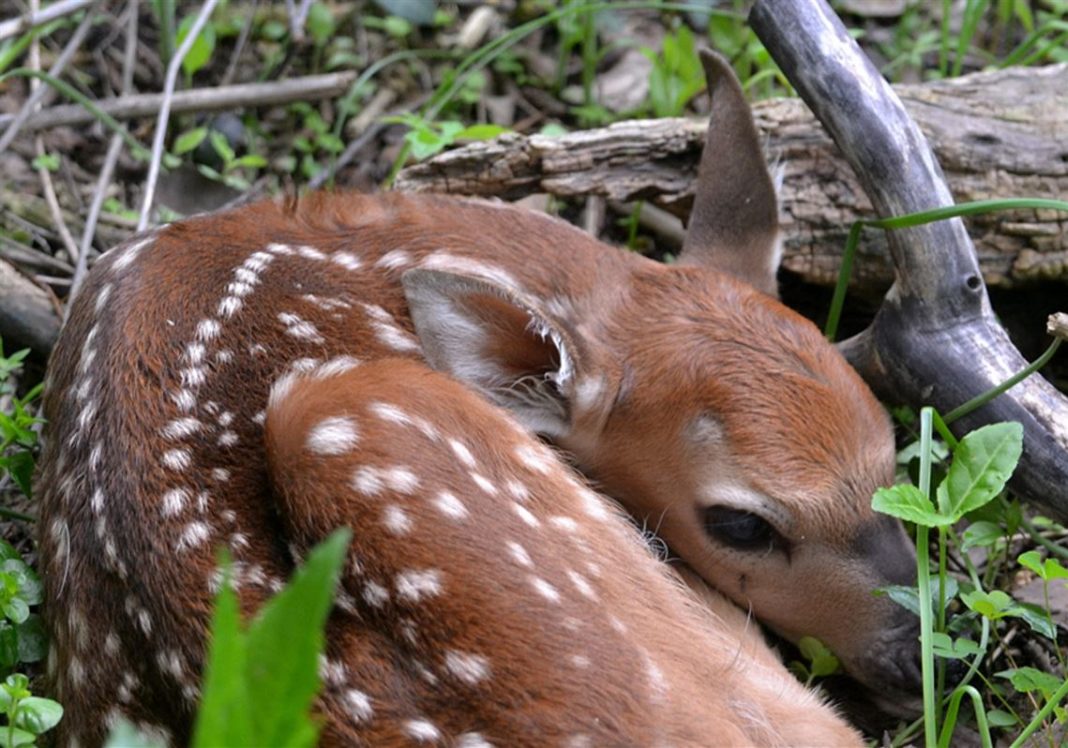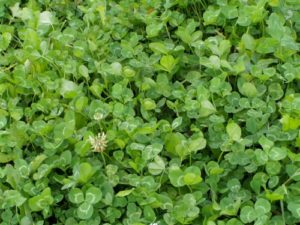Signs Of Life
The first signs of the arrival of spring are warming and as unpredictable as a tornado as temperatures begin to rise and fall almost on a daily basis and lush new growth begins to blanket the countryside. From late April into May the availability of quality food and temperature swings begin to change whitetails personalities. Bucks, especially older bucks, are often solitary animals, slowly start to reform bachelor groups as spring progresses. Bachelor Groups may consist of as many as 6 to 12 bucks of mixed age classes in a bachelor piling on the pounds going heading into summer.
High Octane Spring Foods
All Whitetails will seek the first available high-quality Browse and green food in early spring to revamp their winter-ravaged bodies from a long Cold Winter and the rigors of 2 months of rutting. The first new sprouting native vegetation has more high octane nutrition in it than it will have at any other time of the season. The protein and mineral content in the new spring growth is toppled with nutrition. Whitetails turn to fresh new grasses, native browse and forbs to gain back what was lost in winter. The new browse shoots from these native plants are highly nutritious, bringing high octane nutrition from 18% to 30% to lactating does and boosting muscle development and replenishing weight loss on bucks to who are beginning the journey of antler development.
Annual and perennial forbs and native browse are the main tiers of a deer’s diet during the spring and summer months.
Well-Rounded Nutrition
Whitetail deer require different nutritional requirements at different times of the year; just like people, whitetails need a well-rounded diet. Growing bucks, lactating does, and newborn fawns require these nutritional needs: calcium, phosphorus, fiber, sodium, carbohydrates, and fat, as well as the baseline of protein and water. By providing a good chunk of these requirements on your property, whitetails will gravitate to your ground, and more times than not, spend the majority of their life on your property.
Nutritional Calendar
Woody browse or deer browse is defined as the leaves, twigs, and buds of woody plants consumed by whitetails. Whitetail deer are primarily browsers. Eating browse is an important part of what deer consume especially during the late winter months and early spring months when food is hard to come by. In fact, browse may be the only food source available during much of the winter.
The calendar date for browse is all season and includes:
- Blackberry
- Blueberry
- Dogwood
- Elderberry
- Elms
- Grapes
- Greenbrier
- Partridge pea
- Maples
- Oaks
- Persimmon
- Poison ivy
- Sassafras
- Serviceberry
- Sumacs
- Viburnum
- Virginia creeper
Whitetails also eat a wide variety of native plants such as ferns, wild mushrooms and herbaceous forages (forbs) from April into the last days of summer when palatability and quality diminish.
- Asters
- Brassicas
- Clover
- Coralberry
- Chickweed
- Crotons
- Fleabanes
- Goldenrods
- Lespedezas
- Pokeweed
- Prickly lettuce
- Ragweed
- Smartweeds
- Sunflowers
- Sweet clovers
- Tick trefoils
- Verbena
- Vetches
- Violets
- Wild strawberry
Hard (Acorns,Hickory) and soft mast (Apples) are a whitetails main focous during the fall when antler development has finished and does have weaned their fawns, allowing deer to build up their fat reserves for the rigors of the breeding season and the upcoming winter. Acorns and corn are low in protein but have a huge high energy and fat content, so they are staple foods in areas where they are available.
- Beech nuts
- Blackberry
- Crabapple
- Grapes
- Hazelnut
- Honey locust
- Oak (acorns)
- Persimmon
- Corn
- Beans
Grasses rarely are a preferred food item of whitetails, except during the early growth stages when the grass shoots are more digestible, from April through June. Cereal grains, such as oats, wheat, and rye, are highly preferred.
- Bluegrass
- Bromes
- Oats
- Panic grasses
- Rye
- Wheat
A healthy white-tailed deer population, landowners and managers half to understand and provide whitetails for their nutritional needs throughout the year. Although a whitetail nutritional requirement vary by season, deer density, physiological activity, a well devised plan like the ones from the NDA management practices can be implemented to enhance habitats, providing a diversity of forages to keep whitetails on your hunting property.



















![The Best Deer Camp Chili [VIDEO] Deer Chili Ingredients, Tomatoes, Chili Spices](/wp-content/uploads/2015/10/Deer-Chili-Deer-Camp-Recipe-218x150.jpg)
![How to Call Elk Early in the Season [VIDEO]](/wp-content/uploads/2016/08/byers003-218x150.jpg)





![Idiots Disturb Hunter: How Would You Have Handled It? [VIDEO]](/wp-content/uploads/2015/10/DSC00110-e1474487693878-100x70.jpg)
![Albino Buck Shocked to Shed His Antlers [VIDEO]](/wp-content/uploads/2015/10/AlbinoDeer-100x70.jpg)